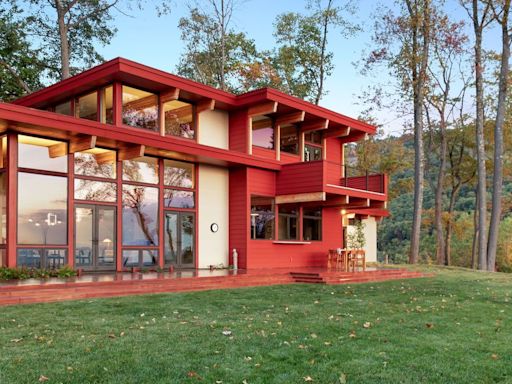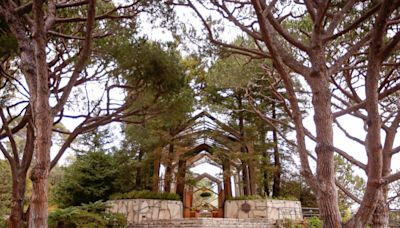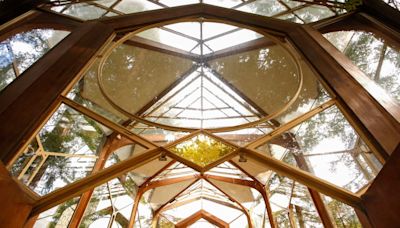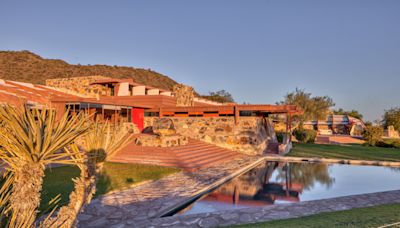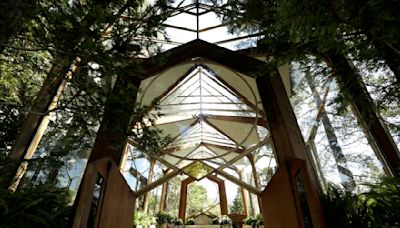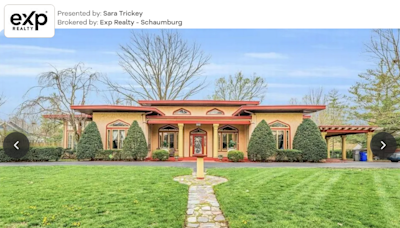Search results
Frank Lloyd Wright Sr. (June 8, 1867 – April 9, 1959) was an American architect, designer, writer, and educator. He designed more than 1,000 structures over a creative period of 70 years.
- Architect
- Overview
- Early life
- The early Chicago years
As an infant, Frank Lloyd Wright moved to Iowa in 1869 with his family before living in Rhode Island and Massachusetts and eventually moving back to his mother’s home state of Wisconsin. He attended the University of Wisconsin at Madison in 1885–86, but as there were no architecture courses, he took engineering courses.
What is Frank Lloyd Wright best known for?
Frank Lloyd Wright was a great originator and a highly productive architect. He designed some 800 buildings, of which 380 were actually built. UNESCO designated eight of them—including Fallingwater, the Guggenheim Museum, and Unity Temple—as World Heritage sites in 2019. He is known as chief practitioner of the Prairie school of architecture.
How did Frank Lloyd Wright become famous?
Frank Lloyd Wright became famous as the creator and expounder of “organic architecture”—his phrase indicating buildings that harmonize with their inhabitants and their environment. The boldness and fertility of his invention and his command of space are probably his greatest achievements. Throughout his career, Wright emphasized ornamental detail, earthy colours, and rich textural effects.
Frank Lloyd Wright (born June 8, 1867, Richland Center, Wisconsin, U.S.—died April 9, 1959, Phoenix, Arizona) architect and writer, an abundantly creative master of American architecture. His “Prairie style” became the basis of 20th-century residential design in the United States.
Wright’s mother, Anna Lloyd-Jones, was a schoolteacher, aged 24, when she married a widower, William C. Wright, an itinerant 41-year-old musician and preacher. (There is uncertainty over whether Frank was given the middle name Lincoln at birth. However, he later adopted Lloyd as his middle name.) The Wrights moved with their infant son to Iowa in 1...
Wright left Madison early in 1887 for Chicago, where he found employment with J.L. Silsbee, doing architectural detailing. Silsbee, a magnificent sketcher, inspired Wright to achieve a mastery of ductile line and telling accent. In time Wright found more rewarding work in the important architectural firm of Dankmar Adler and Louis Sullivan. Wright soon became chief assistant to Sullivan, and in June 1889 he married Catherine Tobin. He worked under Sullivan until 1893, at which time he opened his own architectural practice. His family grew to six children, while his firm grew until as many as 10 assistants were employed.
The first work from the new office, a house for W.H. Winslow, was sensational and skillful enough to attract the attention of the most influential architect in Chicago, Daniel Burnham, who offered to subsidize Wright for several years if Wright would study in Europe to become the principal designer in Burnham’s firm. It was a solid compliment, but Wright refused, and this difficult decision strengthened his determination to search for a new and appropriate Midwestern architecture.
Britannica Quiz
Artists, Painters, & Architects
Other young architects were searching in the same way; this trend became known as the “Prairie school” of architecture. By 1900 Prairie architecture was mature, and Frank Lloyd Wright, 33 years old and mainly self-taught, was its chief practitioner. The Prairie school was soon widely recognized for its radical approach to building modern homes. Utilizing mass-produced materials and equipment, mostly developed for commercial buildings, the Prairie architects discarded elaborate compartmentalization and detailing for bold, plain walls, roomy family living areas, and perimeter heating below broad glazed areas. Comfort, convenience, and spaciousness were economically achieved. Wright alone built about 50 Prairie houses from 1900 to 1910. The typical Wright-designed residence from this period displayed a wide, low roof over continuous window bands that turned corners, defying the conventional boxlike structure of most houses, and the house’s main rooms flowed together in an uninterrupted space.
During this period Wright lectured repeatedly; his most famous talk, The Art and Craft of the Machine, was first printed in 1901. His works were featured in local exhibitions from 1894 through 1902. In that year he built the home of the W.W. Willitses, the first masterwork of the Prairie school. In 1905 he traveled to Japan.
Apr 2, 2014 · Learn about the life and work of Frank Lloyd Wright, a modern architect who developed an organic and distinctly American style of architecture. Explore his iconic buildings such as Fallingwater and the Guggenheim Museum, his Prairie School architecture, his personal struggles and achievements, and his legacy.
Learn about the life and work of Frank Lloyd Wright, one of the most influential and innovative architects of the 20th century. Explore his biography, artistic legacy, and important art by Wright, such as the Larkin Building, Unity Temple, and Fallingwater. Discover his design philosophy of "organic architecture" and his Prairie Style of architecture.
- American
- June 8, 1867
- Richland Center, Wisconsin, USA
- April 9, 1959
Learn about the life and legacy of Frank Lloyd Wright, one of the most influential architects of the 20th century. Explore his organic, modern, and utopian designs for buildings, cities, and interiors at MoMA and beyond.
Explore the life and legacy of Frank Lloyd Wright, one of the most influential and controversial 20th-century architects, through his buildings, projects and legacy. Learn about his houses, offices, churches, skyscrapers, hotels and museums, and his connection to Arizona and Taliesin West.
People also ask
How many buildings did Frank Lloyd Wright design?
What was Frank Lloyd Wright famous for?
Was Frank Lloyd Wright a modern architect?
Where can I find a book about Frank Lloyd Wright?
